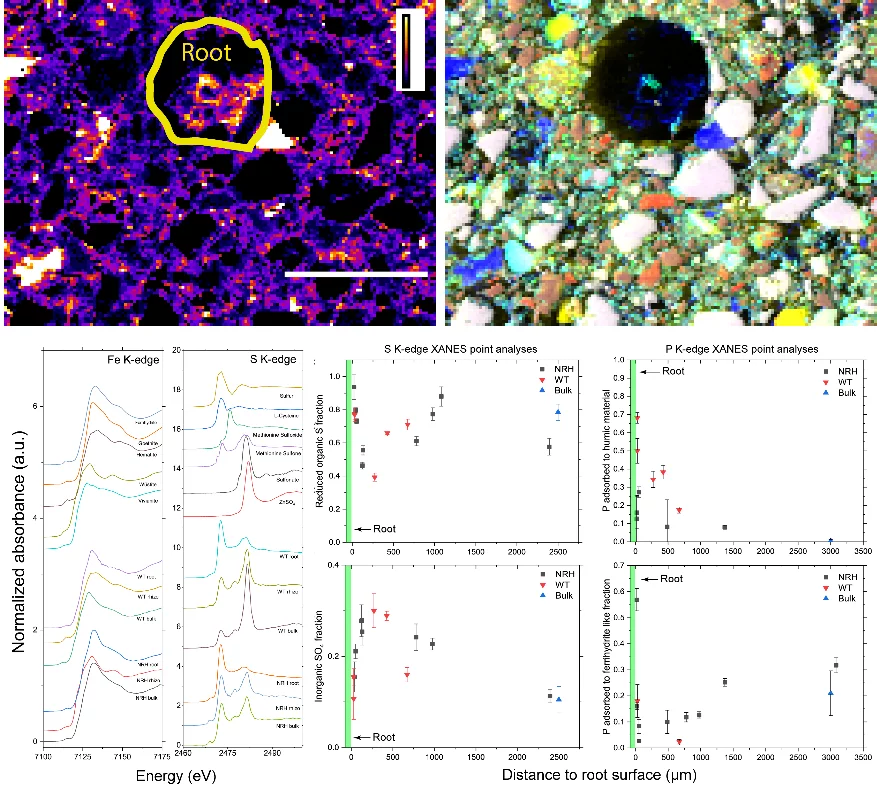Soil resources are usually inaccessible to plants, because of the tightly bound nature of nutrients to soil minerals and organic matter. Roots can overcome this by engineering their direct environment, the rhizosphere. Roots significantly augment rhizosphere soil structure that is beneficial, such as bulk density and porosity. However, the chemical alterations have not been extensively investigated in situ. This study combines structural information, previously obtained with synchrotron X‐ray computed tomography (XCT), with XRF microscopy and XANES spectroscopy to unravel chemical changes induced by plant roots. Our results suggest that iron (Fe) and sulfur (S) increase notably in the direct vicinity of the root via solubilization and microbial activity. XANES further shows that Fe is slightly reduced, S is increasingly transformed into sulfate (SO42−) and phosphorus (P) is increasingly adsorbed to humic substances in this enrichment zone. Moreover, the ferrihydrite fraction decreases drastically, suggesting the preferential dissolution and the formation of more stable Fe oxides. Additionally, the increased transformation of organic S to sulfate indicates that the microbial activity in this zone is increased. These changes in soil chemistry correspond to the soil compaction zone as previously measured via XCT. The fact that these changes are co-located near the root and the compaction zone suggests that decreased permeability as a result of soil structural changes acts as a barrier creating a zone with increased rhizosphere chemical interactions via surface‐mediated processes, microbial activity and acidification. The measurements have been taken at the PHOENIX beamline of the Swiss Light source and beamline I18 of the Diamond Light Source.
Contact
Original Publication

